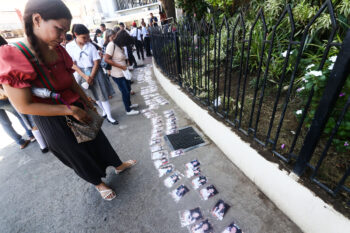DAVAO CITY (MindaNews/23 October) — A group has pushed for creating a niche for Philippine specialty coffee in the Asean markets and other parts of the world despite the 70,000-metric ton annual deficit in local supply.
During the 8th National Coffee Summit in Davao City on Thursday, Philippine Coffee Board Inc. co-chair Pacita U. Juan told reporters that coffee farmers must take advantage of the zero tariff rates that will be implemented as the Asean Economic Community takes effect in December this year.
Juan said most of the country’s annual coffee production of 23,000 metric tons are Robusta and set aside for instant coffee while 10,000 MT are for the “roast and grind”.
Of the 10,000 MT, only 2,000 MT are produced as specialty coffee, which can compete in terms of quality with that of the coffee-producing regions of the world.
The country’s annual coffee production is way below the annual consumption of 100,000 MT that it has to import from Vietnam and Indonesia to fill in the supply gap.
Aside from Arabica and Robusta, the other varieties grown in the Philippines are Excelsa and Liberica.
At least 70 percent of the country’s production is coming from the mountainous areas of Mindanao such as Davao Region, Bukidnon, and Sulu.
She cited the highland catimor coffee grown in Kapatagan, Digos City by businessman Sonny Dizon that won 1st runner up in the Syphon Category and 2nd runner up in the Espresso category during the Roaster’s Choice Awards last year.
She added Mt. Apo is blessed with micro climate, meaning it can yield fruits all-year round, aside from the soil and farming practices that contribute to quality.
Juan said the labels on the sacks of these coffees must indicate the origin, name of the farm, and name of the farmer so that it can be easily identified in the international market.
This technique is currently being done in Benguet in the Cordillera.
The coffee board is training coffee farmers on methods to improve the quality, especially the flavor, by teaching them how to ferment and undergo the washing method.
The body is also advocating for the “pick red cherries” practice to ensure that only the beans that are at the height of ripeness are harvested.
“The best coffee is when you can drink it hot and cold. If you cannot drink it when it’s cold, there must be something wrong with your coffee,” Juan said. (Antonio L. Colina IV/MindaNews)
